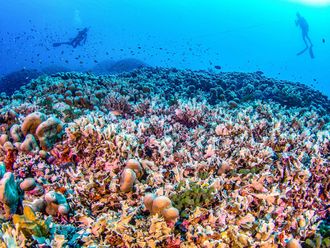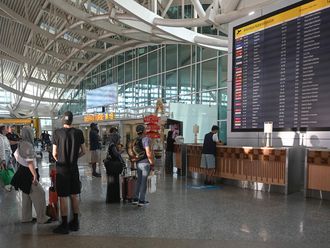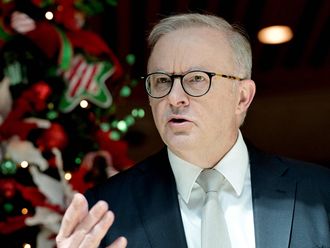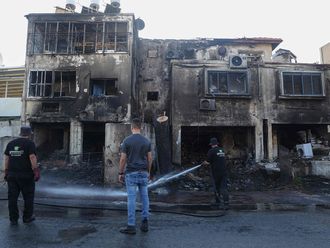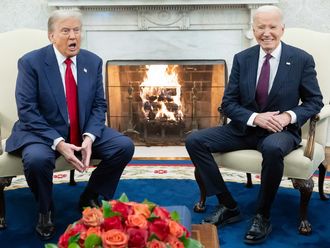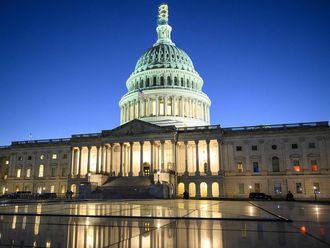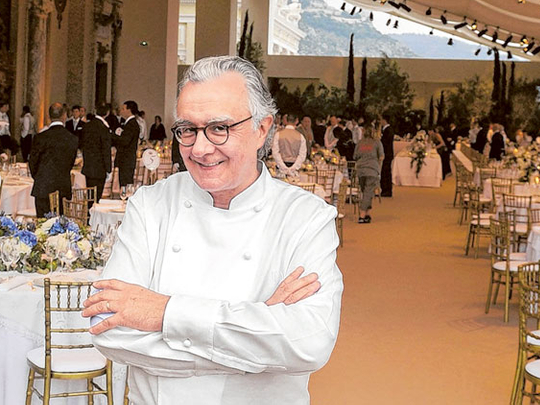
Paris: One summer’s day 28 years ago, Alain Ducasse - the man dubbed the “godfather” of French cuisine - was rescued half-paralysed from a mountainside in the Alps, sole survivor of a plane crash.
It was three years before the chef could walk unaided: “I had to imagine and write down recipes, and have others execute them for me,” the 56-year-old told Le Monde newspaper in a recent interview.
“The accident changed my way of doing the job.”
This month Ducasse fetes a quarter century at his first three-star eatery, the Louis XV in Monaco, by hosting a November 16-18 pow-wow for 240 chefs in the principality - of which he became a citizen in 2008.
Today at the helm of a global empire with 21 Michelin stars to his name, Ducasse pioneered a radical new culinary business model, sharing his secrets with an army of disciples of the Ducasse school of haute cuisine.
The scale of the Monaco event, devoted to the Mediterranean-inspired cuisine he long championed, is a sign of his clout on planet food.
The chef has fingers in dozens of pies from space flights to the Eiffel Tower, luxury hotels, publishing and training programmes, under the umbrella of Alain Ducasse Entreprise (ADE), which turned over 68 million euros ($87 million) last year.
Ducasse is not alone at the top table of French cuisine - the profession already has an “emperor” in the person of Paul Bocuse, 86, and a “chef of the century”, Ducasse’s long-time rival Joel Robuchon, 67.
But his Louis XV has trained hundreds of chefs in the Ducasse style, acting like an incubator to create what France’s top food critic Francois Simon dubs “an extraordinary network”.
“There is no space left on the world map to put our guys,” jokes Franck Cerutti, Ducasse’s longtime ally and the chef of the Louix XV.
“The Steve Jobs of gastronomy”
“Jet chef” is another of Ducasse’s nicknames, from the time he spends travelling the planet inspecting his two dozen eateries, from Paris to Tokyo or Las Vegas, with Qatar to follow next year.
Born to a family of farmers in the southwestern Landes region, Ducasse talks of being strongly influenced by his grandmother’s home cooking.
Impatient by nature, he quit catering school “because it wasn’t going fast enough,” says Cerutti, learning his trade in the kitchens of nouvelle cuisine pioneer Michel Guerard, as well as Gaston Lenotre, Roger Verge and Alain Chapel.
High quality produce is his mantra.
“Better to have turbot without inspiration, than inspiration but no turbot,” runs his motto.
His style? Though Mediterranean at its roots, he adapts to each venue with a “glocal” approach - both global and local - turning out camel pastilla in Doha, and classic Parisian for the Eiffel Tower’s eatery, the Jules Verne.
Many who know him say his plane crash - the year of his second Michelin star - was decisive in shaping his insatiable character.
Cerutti disagrees: “He was like that before.”
In 1987, he arrived in Monaco, earning three stars in 1990. He arrived in Paris in 1996, and clinched three stars there too the following year.
In 2005 he became the first to hold three stars in three different places by adding New York, a triumph all the sweeter since the restaurant had been panned by critics when it opened five years earlier.
Ducasse makes no secret of the fact he is no longer personally in the kitchen of his numerous eateries - whose creations he tastes and rubber-stamps, or not. How could he be with an empire to run?
“He’s like the Steve Jobs of gastronomy,” jokes one colleague.
His skill, according to Marc Haeberlin, chef of the three-star Auberge de l’Ill in France’s eastern Alsace region: “The ability to spot talent, and to duplicate the secrets of his cuisine.”
The critic Simon is more measured: for him, Ducasse’s strategy has brought a kind of “coldness to a cuisine that has to be imitable, therefore less demanding in terms of research”.


